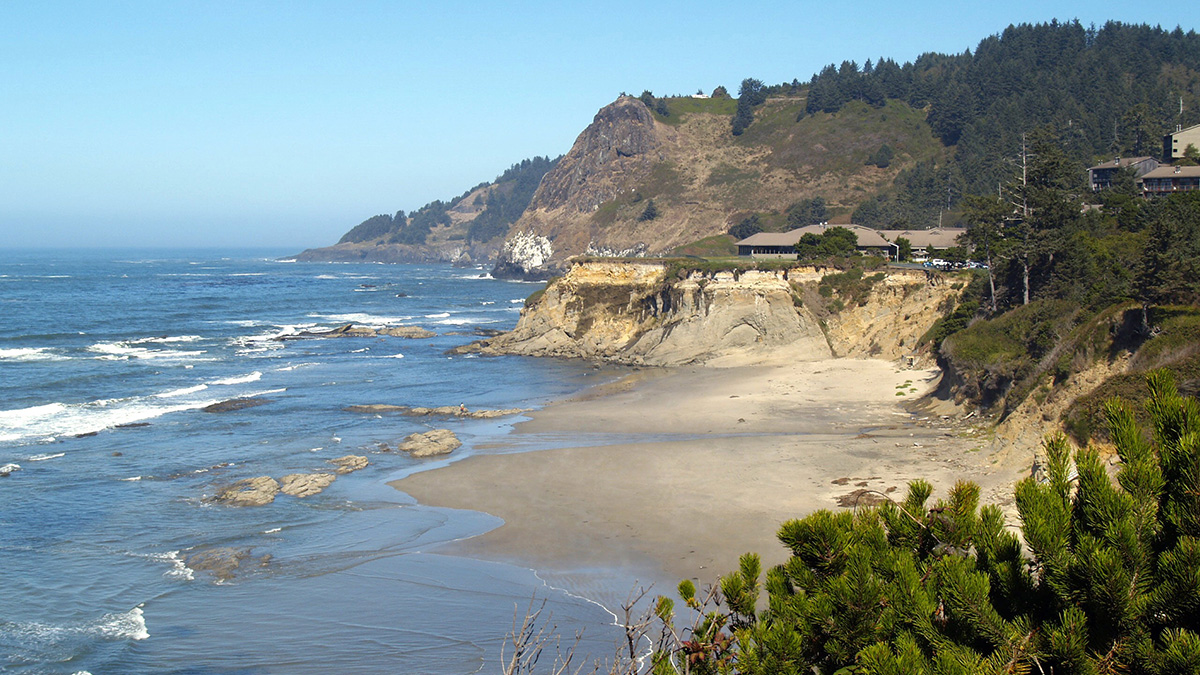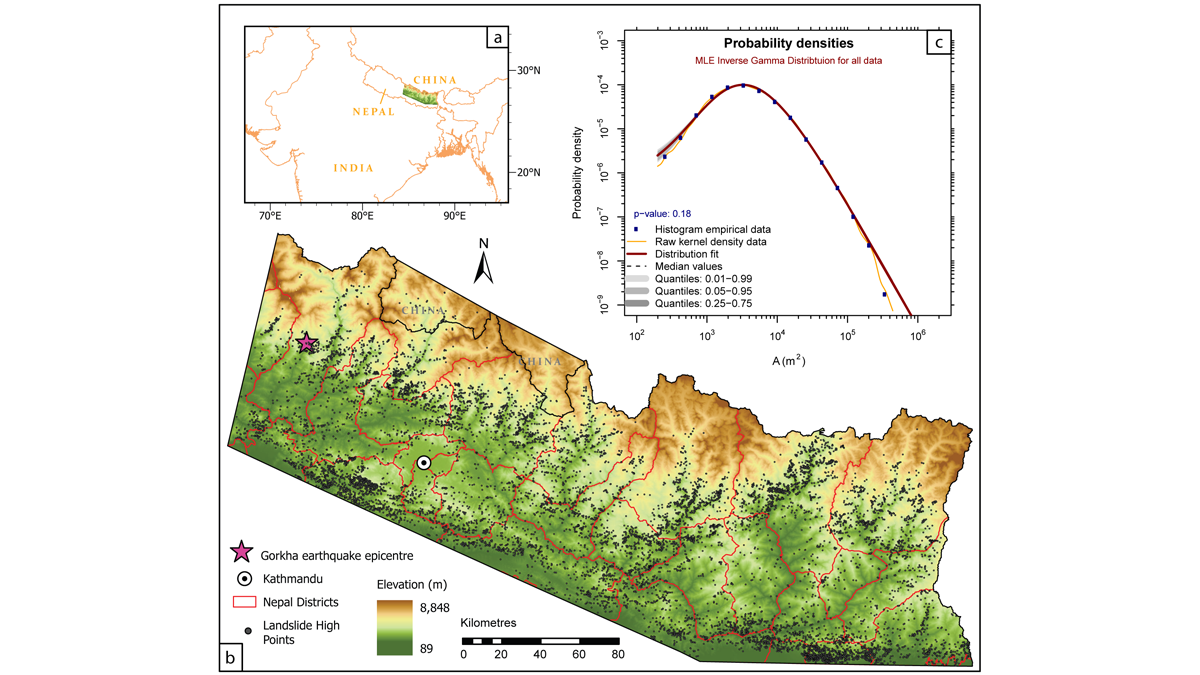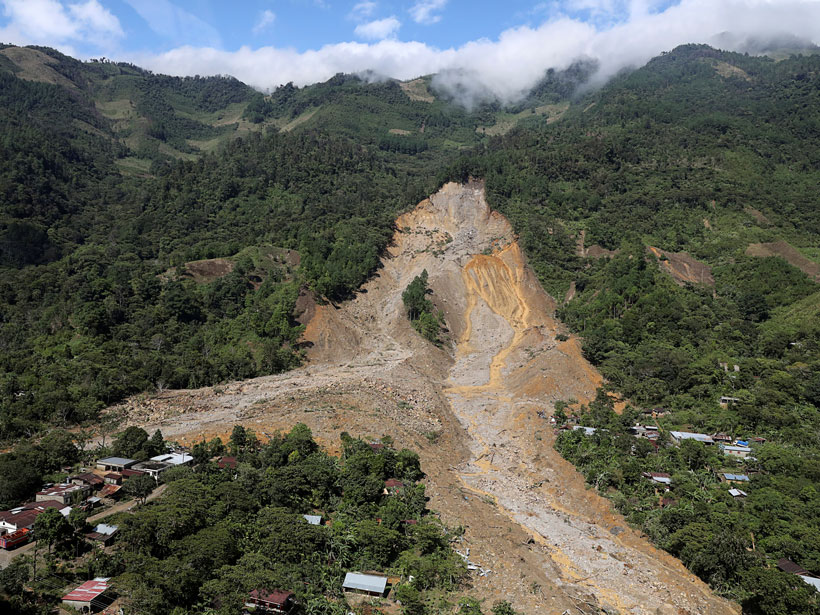A new initiative is bringing together scientists to address fundamental questions about subduction zone geohazards, using the latest advances in observation technology and computational resources.
landslides
History Matters When Gauging Hillslope Susceptibility to Failure
Using susceptibility models to forecast the potential locations of landslides is a key tool in mitigating landslide hazard, but are existing approaches appropriate in dynamic mountainous settings?
Which Came First, the Eruption or the Landslide?
Anak Krakatau’s eruption was accompanied by a devastating tsunami. But was the eruption to blame?
No Relief from Rain: Climate Change Fuels Compound Disasters
Climate change is increasing the risk of fire-rain events, raising mudslide concerns in fire-prone communities.
Ice Lenses May Cause Many Arctic Landslides
When permafrost thaw reaches concentrations of ice underneath the surface, it may trigger local soil instability.
Satellites Support Disaster Response to Storm-Driven Landslides
Extreme precipitation can trigger deadly landslides. Satellite-based tools provide regional perspectives on landslide hazards, help assess risks in near-real time, and guide emergency responses.
An Iceberg May Have Initiated a Submarine Landslide
A new study shows that icebergs may initiate submarine landslides when they collide with the seafloor.
The Wildfire One-Two: First the Burn, Then the Landslides
Severe wildfires strip away plant cover and reduce the soil’s ability to hold water. A new study develops a model to better understand landslide risk following a burn.
Thickness and Strength of Slow-moving Landslides Revealed
Hundreds of slow-moving landslides’ deformation patterns were inverted to obtain their thickness and frictional strength, revealing that larger landslides are weaker and thinner than smaller ones.
Landslides Mar the “Pearl of Africa”
Behind Uganda’s lavish beauty, climate change has taken its toll: Death, destroyed properties, and displaced communities increase as above-normal rainfall floods the country.










